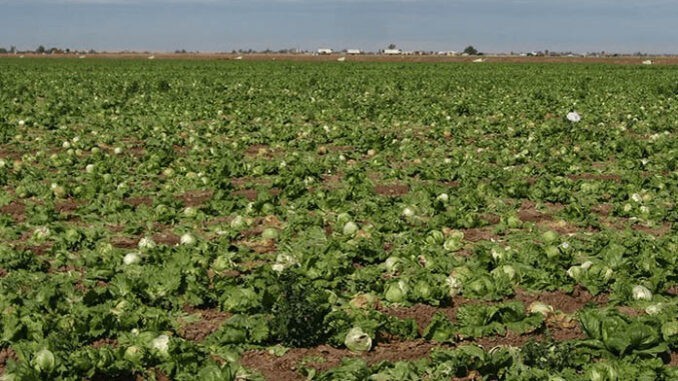
University of Arizona Cooperative Extension scientists are working with the U.S. Food and Drug Administration, Yuma growers, the Arizona Department of Agriculture and local irrigation districts on a multi-year study to look at growing practices and the environment in the Yuma produce growing region.
The multi-partner study comes in order to provide recommendations toward enhanced food safety after the 2018 outbreak of E.coli O157:H7 linked to romaine lettuce grown in the area.
While the FDA, the Arizona Department of Agriculture and other state partners conducted an environmental assessment from June through August 2018 that narrowed the scope of the outbreak, the specific origin, the environmental distribution and the potential reservoirs of the outbreak strain remain unknown.
As part of the study, UA researchers will work with the FDA, Yuma Area Leafy Greens Industry and the Wellton-Mohawk Irrigation and Drainage District to:
- assess potential sources of microbial contamination in the growing region; and,
- look at the prevalence and persistence of pathogens in the ecosystem and the effect that temporal fluctuations from season to season might have on microorganisms of public health significance that may be in or near the growing environment.
UA researchers will use key learnings to provide recommendations to Yuma growers toward best management practices to enhance food safety in the region.
“University of Arizona assistants in extension, students and staff will be collecting and examining samples from the environment such as surface water, canal sediment and dust. The team will also be collecting scat samples to assess the impact that animal intrusion and native wildlife in the area may have on the growing environment,” said Channah Rock, UA professor and extension specialist.
Collaborators say the findings from the study will contribute new information on how various environmental influences on bacterial persistence and distribution in the Yuma agricultural region impact the risk of produce becoming contaminated, leading to improved growing and harvesting practices to prevent or mitigate those risks, and ultimately enhancing the safety of produce grown in the region.
“While production of safe food is paramount to growers of leafy greens, outbreaks still occur. Because of the commitment of local Yuma produce industry to food safety, we’re able to work side-by-side to find solutions, enhance food safety and ultimately protect public health,” Rock said.
